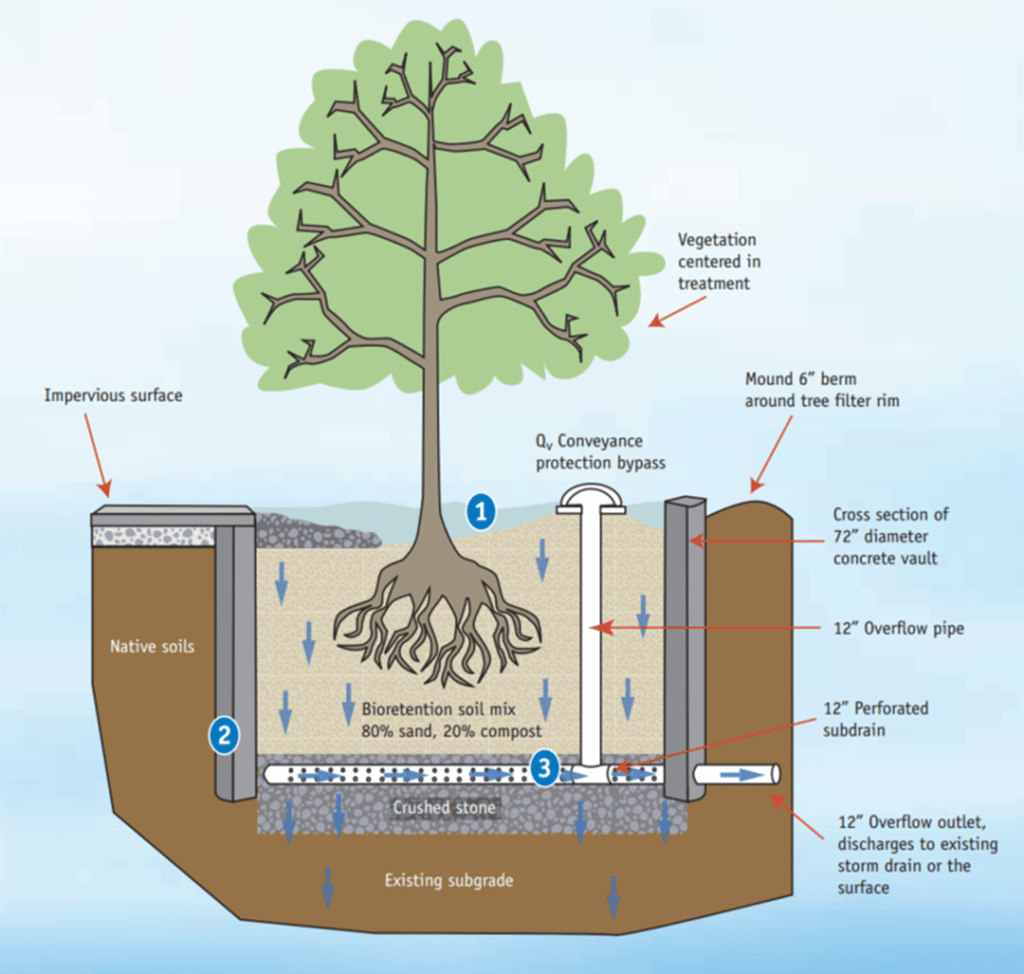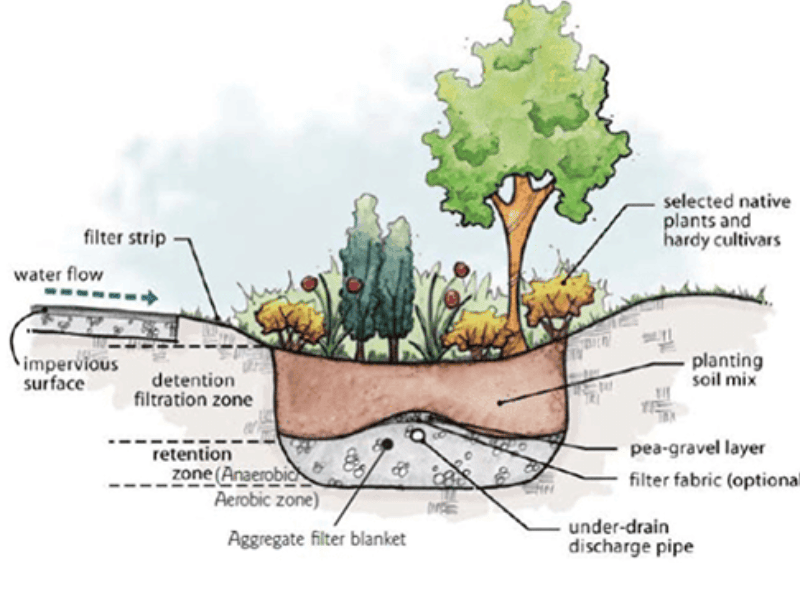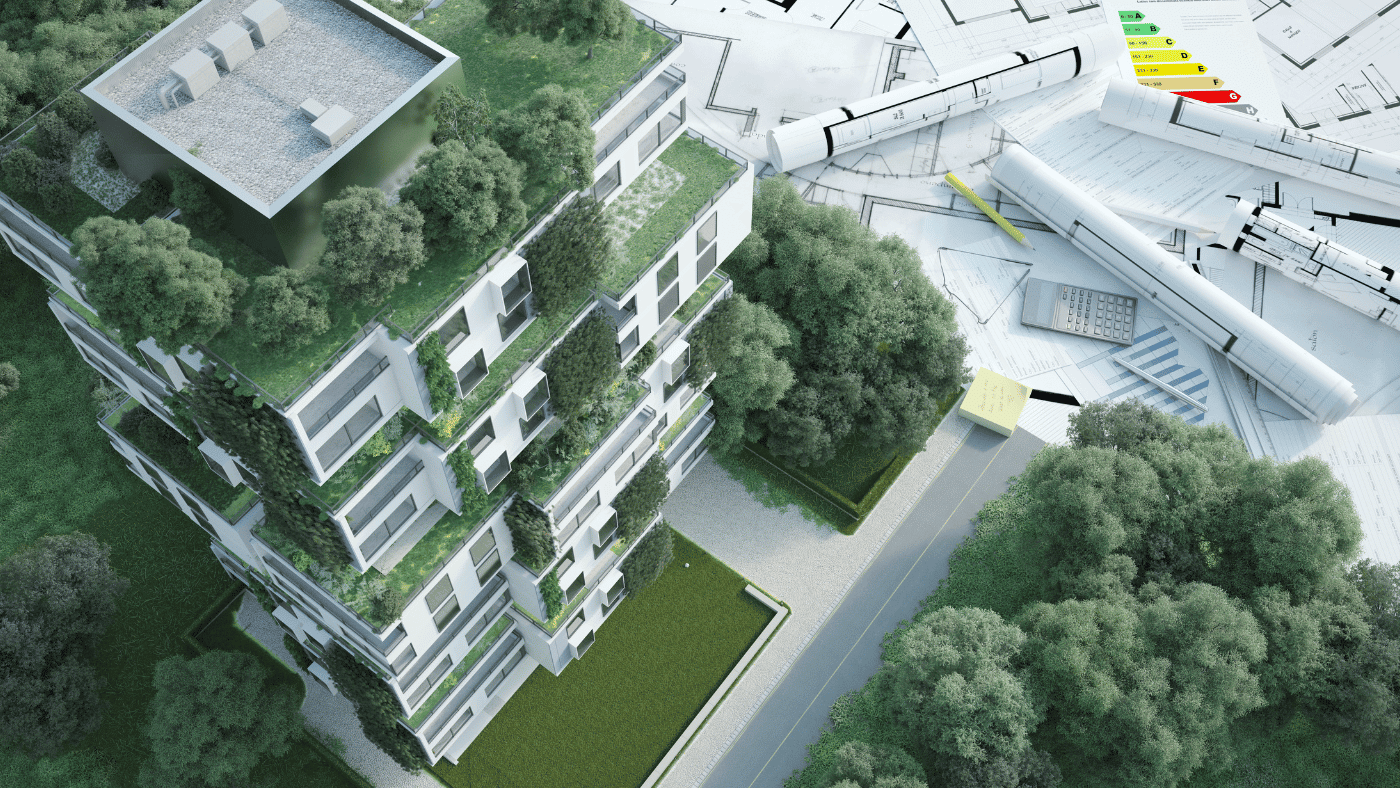Many cities across the United States are experiencing intense storms at higher frequencies and are finding that their existing infrastructure to be undersized and inadequate to handle the changes being brought by climate change.
As these jurisdictions look to the future to determine what their cities will look like, sustainable cities and solutions dominate the conversation. While the term “sustainable” can have many different applications in different sectors and environments, city planners are turning towards low impact development drainage solutions to bridge the gap between rising flooding concerns and adding sustainable infrastructure to their cityscapes. According to the US Environmental Protection Agency, Low Impact Development “refers to systems and practices that use or mimic natural processes that result in the infiltration , evapotranspiration or use of stormwater in order to protect water quality and associated aquatic habitat.”[1]
What are sustainable cities?
“A sustainable city is one designed to address social, environmental, and economic impact through urban planning and city management. Many sustainable initiatives are achieved by building eco-friendly alternatives into city infrastructure, such as adopting walk and bike lanes.” – The Zebra
What are Low Impact Development (LID) solutions?
According to the EPA, ‘the term low impact development (LID) refers to systems and practices that use or mimic natural processes that result in the infiltration, evapotranspiration, or use of stormwater in order to protect water quality and associated aquatic habitat. At both the site and regional scale, LID/GI practices aim to preserve, restore, and create green space using soils, vegetation, and rainwater harvest techniques. LID is an approach to land development (or re-development) that works with nature to manage stormwater as close to its source as possible. LID employs principles such as preserving and recreating natural landscape features, and minimizing effective imperviousness to create functional and appealing site drainage that treat stormwater as a resource rather than a waste product.

A Few LID Technologies Defined
Some examples of frequently used LID technology include Bro-Retention & Rain Gardens, Bioswales, Permeable Pavers, Tree Box filters, and Green Roofs.
Rain Gardens: Also often called, bioretention gardens, rain gardens refer to a depressed area in the landscape that collects rain water from a roof, driveway, parkin area, or street and allows for rain to soak into the soil.[2]
Bioswales: Linear in design, bioswales are vegetated ditches and can be referred to as ‘filter strips’ ‘vegetated swales’ or ‘grass swales’.[3]
Permeable Pavers: Permeable alternatives to conventional concrete or asphalt pavers are rising in popularity. Permeable or porous asphalt, concrete, and pavers allow stormwater to soak directly into the ground, reducing surface runoff and enhancing groundwater recharge.[4]
Tree Box Filters: Devices that shuttle stormwater from the street into a concrete box filled with a special soil mix and planted with a street tree. These devices treat stormwater by filtering out pollutants contained in the street runoff as water flows from the street, through the device, and out into underground stormwater pipes. [5]
Green Roofs: A green roof, or rooftop garden, is a vegetative layer grown on a rooftop. [6] While also excellent for drainage solutions, green roofs have been proven to reduce temperatures and a city’s heat island effect (city-wide ambient temperature) by up to 5 degrees Fahrenheit.

These technologies aim to imbed storm drainage infrastructure within the natural environment and utilize plantings to provide a more natural and sustainable landscape. Additionally, the energy dissipation due to the reduction of flow works to mimic natural and historic drainage patterns, and the plantings and permeation of the water provides additional water quality. In addition to the above technologies, civil engineers who employ LID design can also incorporate Wetland Regeneration design, full-scale Hydrology and Hydraulic Modeling, and Flood Risk Management and Mitigation to deliver additional sustainable drainage solutions.
VERTEX Has You Covered
When selecting a civil engineer for your LID, experience matters. Working with civil engineers who are familiar with design and the permitting can expedite your developments.
In order to make a project successful, civil engineers should hone in on the unique aspects of the site, targeting specific drainage and water quality requirements to maximize the greenscape. VERTEX’s team of civil engineers specialize in utilizing LID solutions across the country and have provided LID solutions at various educational developments, commercial developments, industrial developments and more.
To learn more about VERTEX’s Civil Engineering Services, or to speak with a Forensic Expert, call 888.298.5162 or submit an inquiry.
Authored by: Ayesha Sohail EIT
References:
[1] https://www.epa.gov/nps/urban-runoff-low-impact-development
[2] https://www.epa.gov/soakuptherain/soak-rain-rain-gardens
[3] https://www.esf.edu/ere/endreny/GICalculator/BioswaleIntro.html
[4] https://www.mass.gov/service-details/ipswich-targeted-watershed-project-glossary
[5] https://www.unh.edu/unhsc/sites/default/files/media/tree_box_filter_final_report_for_printing.pdf
[6] https://www.epa.gov/heatislands/using-green-roofs-reduce-heat-islands



